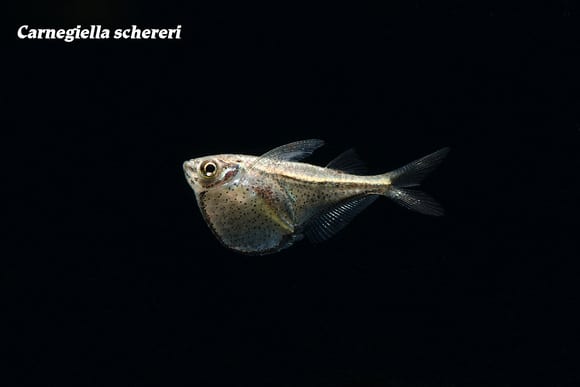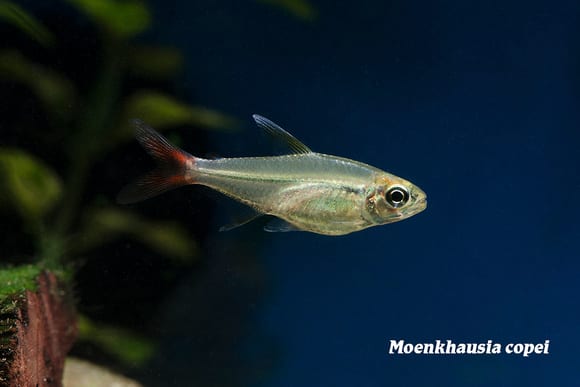Build Your Own Fantasea
Build Your Own Fantasea
A long time ago, in a land far away, there was a fish called Santanichthys. A pioneer in their time, this fish explored the edges of its marine habitat. But, the explorers life is a lonely one, and so, Santanichthys started a family and a home in the brackish waters of Gondwana. Little did they know, that even then, intense pressures were building beneath the surface, and a rift would form that would change things forever. Families were broken up, some were lost, and the ones who survived, found themselves changed under the pressures of their new circumstances. Now, 115 million years later, Santanichthys is the great great great great great……you get the picture….grandfather of 1,674 new species lines. A handful of these can be found today in the land we call Africa, but many more reside on the other side of the globe. It is a few of these many descendants, now thriving in South America, that we will peak in on in this tale. Those by the names of Hemigrammus rubrostriatus, Carnegiella schereri, and Moenkhausia copei.
Scientific NameHemigrammus rubrostriatus
Common NameRed Stripe Tetra
Temperature / pH72 to 79°F / 5.5 to 6.5 pH
Native LocationColombia
Preferred DietOmnivorous
Living a recluse’s life all these years, it wasn’t until 2015 that our kind officially described H. rubrostriatus. Found in freshwater habitats of Colombia, we know little about the preferred habitats of this elusive character. From captive observations, they seem do best in backwater river tank setups with slightly soft and acidic waters, driftwood furnishing, some vegetation, soft substrate, and dried leaf litter. To his closest allies, this characin is known as “Red Stripe Tetra” for the characteristic red horizontal stripe from nose to tail. Reaching about 2 inches in length, this silvery tetra also exhibits a fashionable, elongated, black caudal spot. A very peaceful sort, this characin can be kept alongside any number of South American fellows including, but not limited to, pencilfish, hatchetfish, apistos, and cories. Generalist omnivores, they are easy to feed, and can be kept on diets consisting of high-quality dried flakes and granules with small live and frozen foods for best color expression. Tank waters are best maintained with temperatures between 72 and 79°F, pH of 5.5 to 6.5, and hardness around 53 to 214 ppm.
Scientific NameCarnegiella schereri
Common NameDwarf Hatchetfish
Temperature / pH73 to 81°F / 5.5 to 6.5 pH
Native LocationPeru/Brazil
Preferred DietSmall invertebrates
Hailing as peaceful schoolers in the Amazon Basin of Peru and Brazil, C. schereri is well-known among aquarists. More commonly referred to as “Dwarf Hatchetfish”, these small, shimmering characins are ideal for brightening up the higher strata of South American community tanks. Reaching just 1 inch in length, these teardrop-shaped hatchetfish are bright silver. Gregarious and peaceful by nature, they should be kept in groups of 6 or more, the larger groups showing a more impressive visual display. Found in slow, shady streams, they do best in tanks with soft substrate, low light, tall plants, floating plants, and bogwood or driftwood. Peaceful, but somewhat sensitive, they should be kept alongside those of a similar size and temperament including small characins, pencilfish, rasboras, and bottom-dwellers like cories or farlowellas. Spending all their time at the surface water, they feed primarily on terrestrial invertebrates in the wild. In captivity, they can be fed high-quality floating foods with regular live offerings like small ants, or wingless fruit flies. They do best in waters with temperatures of 73 to 81°F, pH between 5.5 and 6.5, and hardness under 71 ppm.
Scientific NameMoenkhausia copei
Common NameRed Tail Tetra
Temperature / pH72 to 79°F / 6.0 to 7.0 pH
Native LocationOrinoco basin
Preferred DietOmnivorous
Another rare Santanichthys descendant, M. copei is found in many shallow pockets of the Amazon and Orinoco River basins. Known as “Red Tail Tetras”, they reach a mere 2.5 inches in length with shiny silver bodies, and a prominent red caudal fin. Found in densely vegetative areas, they prefer planted tanks with many dark areas, roots, dried leaf litter, and soft substrate. Another peaceful and gregarious characin, they should be kept in groups of 10 or more, and will be more active and secure in larger groups. Males will form a hierarchy, so having a mixed-gender group with a slightly female-biased ratio is fascinating to watch. They do best in community tanks alongside other South American characins, and bottom-dwellers that will not compete for space or food. In the wild, they feed predominantly on small invertebrates and plant matter, and will accept dried and live foods in aquaria. Tank waters should be maintained with temperatures of 72 to 79°F, pH between 6.0 and 7.0, and hardness under 267 ppm.
While Santanichthys itself didn’t exactly have its happily ever after fairy tale ending, its successful and diversified descendants have crossed millennia to find happy homes around the globe and in our tanks. How many people can truly say their hobbies were 115 million years in the making?


